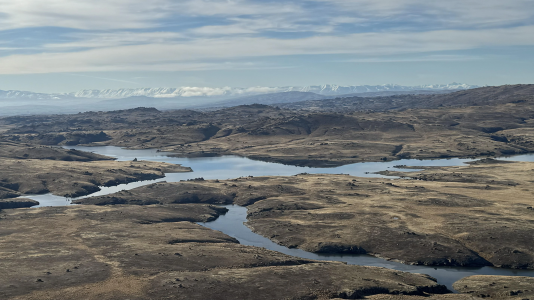Energy buffs give small modular reactors a gigantic reality check
Too expensive, slow, and risky for investors, and they're taking focus off renewables, say IEEFA experts
Miniature nuclear reactors promise a future filled with local, clean, safe zero-carbon energy, but those promises quickly melt when confronted with reality, say a pair of researchers.
Known as small modular reactors, or SMRs, miniaturized atomic power plants have been touted as a way to ensure the world meets climate change mitigation goals as fossil fuels are phased out in favor of renewables and nuclear sources.
With a few SMR projects built and operational at this point, and more plants under development, the Institute for Energy Economics and Financial Analysis (IEEFA) concludes in a report that SMRs are "still too expensive, too slow to build, and too risky to play a significant role in transitioning away from fossil fuels."
IEEFA doesn't have many data points to pull from, with only three SMRs actually online around the world – one in China and two in Russia. A fourth, in Argentina, is still under construction and perfectly illustrates the point IEEFA researchers try to make: It's running far over cost and is facing budget constraints that could affect its future.
The other three SMRs have run into similar issues. They've all been way more expensive than initially agreed upon, and proposals for SMRs in the US face related issues, the report finds.
Per-kilowatt hour costs for SMRs proposed in the US by NuScale, the first company to receive US regulatory approval for SMRs, have more than doubled since 2015. Costs projected by X-Energy and GE-Hitachi for their SMRs have similarly risen since initial proposals.
In most cases, these costs are rising before the US Nuclear Regulatory Commission has even given its approval, IEEFA notes.
Pick none: Fast, good, low risk
If the cost of an SMR were high but the risk low, or if construction were quick, it might be worth considering further development. The report finds that SMRs are neither cheap, quick, nor reliable.
Along with those costs, IEEFA research points out that none of the SMRs built so far have come anywhere close to meeting proposed construction timelines. The two Russian units were supposed to be built in three years, but both took 13. The Shidao Bay SMR in China was estimated as a four-year project but took 12, while the ongoing CAREM 25 in Argentina was also proposed as a four-year development but has so far taken 13.
"Similarly optimistic construction estimates have consistently shown up in US SMR project development presentations," the report notes. Without speed or value to rely on, one would hope that an SMR project was at least low risk, but that doesn't appear to be the case either.
Leaders at two nuclear power companies whose quotes are carried in the report "endorsed nuclear power in the abstract" as a way to transition away from fossil fuels, but both expressed concern over the investment risk.
John Ketchum, CEO of nuclear power firm NextEra, has even said SMRs were nothing but "an opportunity to lose money in smaller batches" at this point in time, which was cited in the report. Chris Womack, CEO at Southern Company, which recently finished building the first new US nuclear reactor this century, similarly expressed concerns about expanding his company's nuclear portfolio.
Quit hogging the energy transition spotlight
The report's data makes it seem like there's not a lot going for SMRs, but "loud and persistent" advocates for the technology have managed to capture the spotlight anyway, say report authors David Schlissel, IEEFA director of resource planning analysis, and Dennis Wamsted, IEEFA energy analyst.
"A key argument from SMR proponents is that the new reactors will be economically competitive," said Schlissel. "But the on-the-ground experience with the initial SMRs that have been built or that are currently under construction shows that this simply is not true."
Meanwhile, all the time, energy, and money spent constructing SMRs is taking resources away from renewables that work, and would work now, the duo said. It's also likely that, even though SMR operators intend their reactors to be complementary to other power sources on the grid, they're far more likely to do the opposite, the report concludes – especially given the rise in construction costs and the need to break even.
"Developers bringing multibillion-dollar SMRs onto the electric grid would have every incentive to run them as much as possible," the report surmises. "The less they run, the more their per megawatt-hour costs rise and the harder it will be for them to compete in the market."







